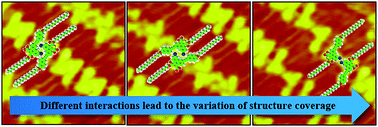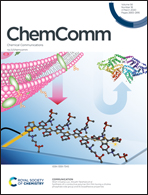The Br⋯π halogen bond assisted self-assembly of an asymmetric molecule regulated by concentration†
Abstract
The two-dimensional (2D) self-assembly behavior of an asymmetric thienophenanthrene derivative (M1) has been theoretically predicted and further probed via STM. The barely exploited Br⋯π halogen bonds play an assisting role in the structural formation, and a strong cooperative effect from the C–H⋯Br bonds is shown. Such π-type halogen bond assisted self-assembly reveals self-adaption properties, which is of great interest for flexible light-emitting devices and self-healing materials.



 Please wait while we load your content...
Please wait while we load your content...